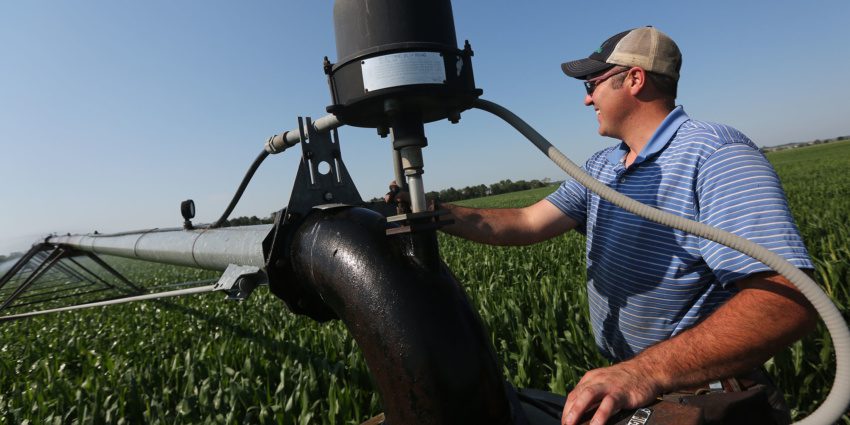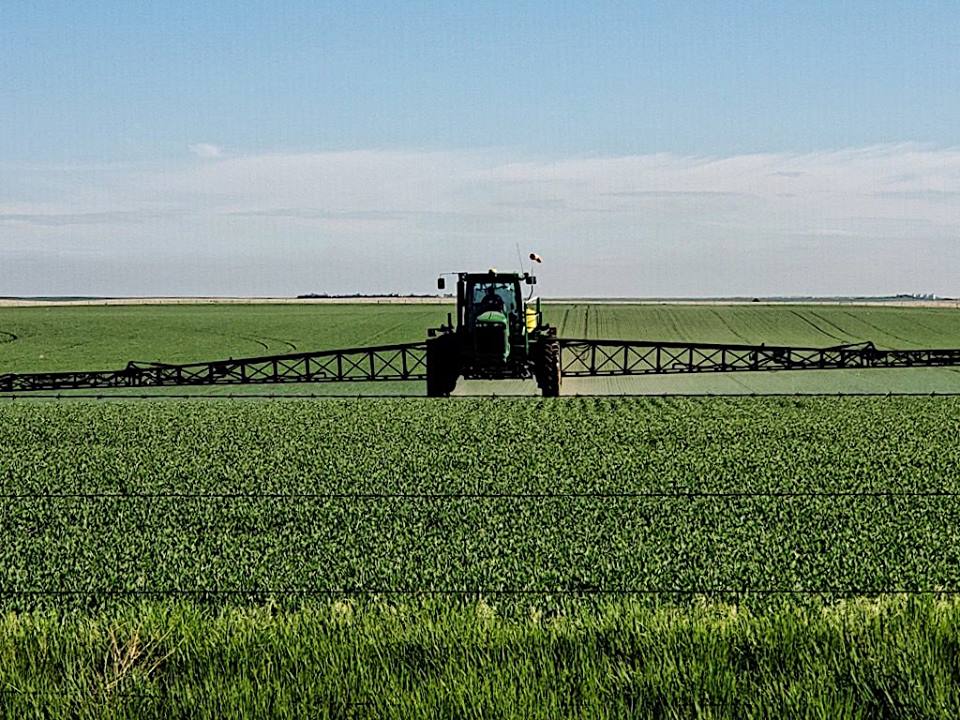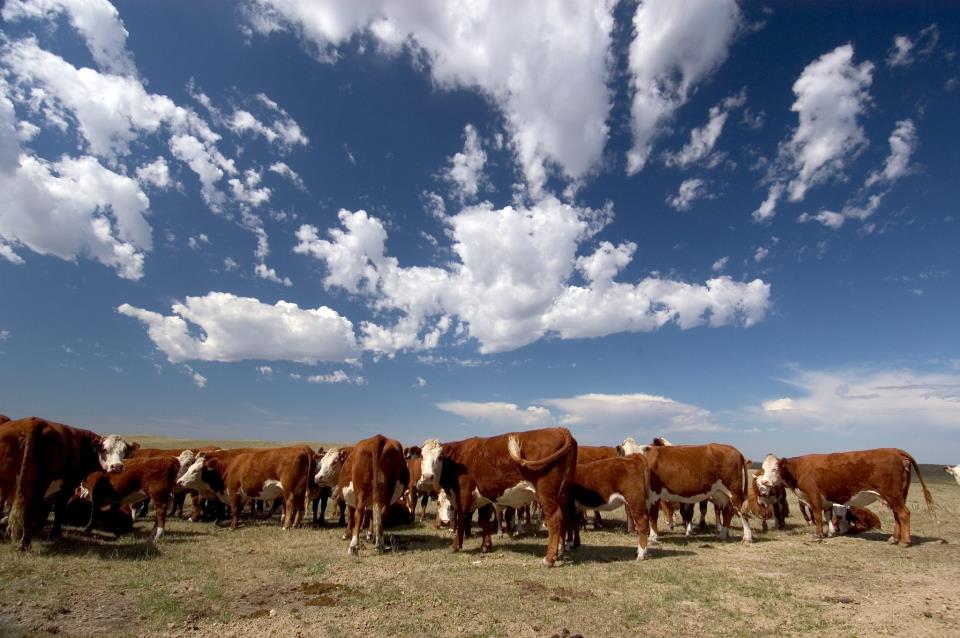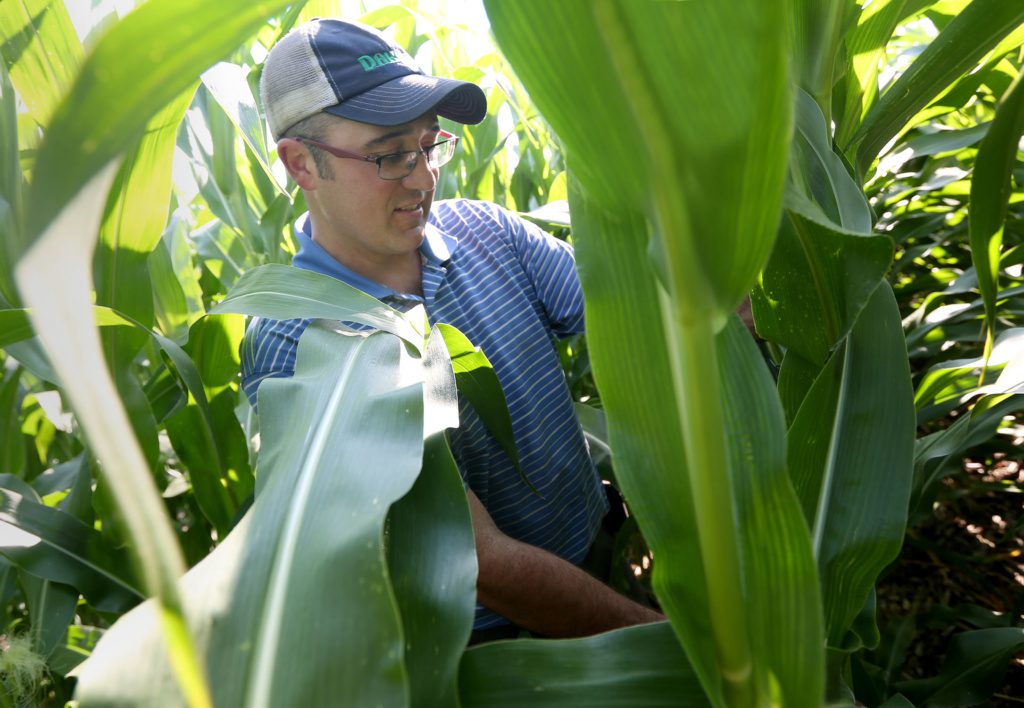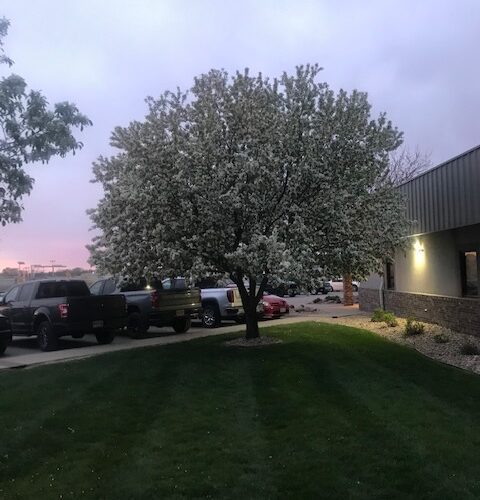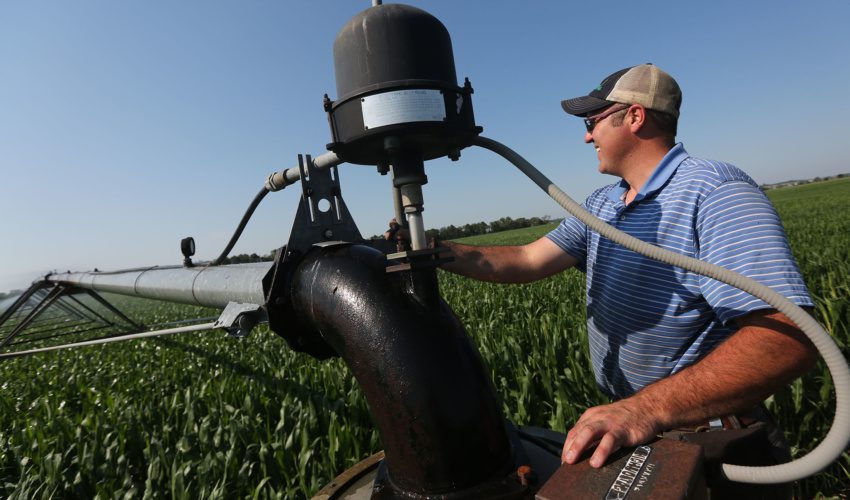After seeds of hope, farmers report trade-related worries
July 30, 2018
By Rob Swenson, for SiouxFalls.Business
Midseason concerns are overtaking spring optimism in South Dakota farm country.
The state’s agricultural economy appeared poised for an upward tick earlier this year, but recent developments are stirring caution, at least in some corners of agriculture.
Projected drops in crop prices and uncertainties about the impact of international tariffs are among the factors weighing heavily on the state’s farmers and ranchers.
Agriculture generally is considered South Dakota’s No. 1 industry and lifeblood of the statewide economy. The industry has a $25.6 billion annual impact on the state, according to the South Dakota Department of Agriculture. So when farmers and ranchers struggle, as some have in recent years, the entire state is likely to feel the pinch.
“In general, farming hopefully bottomed out a couple of years ago,” said Matthew Diersen, an Extension economist at South Dakota State University. “Last year, it improved slightly.”
It’s too early to tell how this year will play out, Diersen said.
Nationally, production prospects for 2018 look good, which have caused current and future prices to drop because large supplies are projected, he said. Locally, higher yields could offset some price reductions, he said.
Generally, prospects for returns on grain, oil seeds and wheat appear to be stronger than for livestock.
Corn and soybeans have become the dominant crops raised in eastern South Dakota. Corn prices were relatively high in 2010, 2011 and 2012, and then fell dramatically in 2013. The trend for soybeans was similar, but it ran about a year behind corn, Diersen said.
Rental rates for land haven’t fallen in proportion to the drop in crop prices, he said, but it usually takes time for production prices to get factored into land values.
Diersen added that the farm sector is dealing with some of the same challenges as other business segments in South Dakota. Some farms and ranches are having trouble finding workers, for example, and increases in fuel prices can reduce income.
Uncertainty in regulation typically has a negative impact on markets. Current international debate about trade tariffs could end up being either a positive or negative factor for producers in the long run, Diersen said.
“You don’t know if the net effect at the end is going to be better or worse,” he said. “It certainly does add to the challenges.”
Whether prices for a commodity are good or bad can depend on the vantage point and specialty of the producer. Farmers who grow crops to feed their livestock will be affected differently by lower grain prices than farmers who sell grain for cash, for example.
Earlier this year, the U.S. Department of Agriculture forecasted that net farm income across the nation would decrease 6.7 percent, or $4.3 billion, to $59.5 billion in 2018. That would be the lowest since 2006. Corn receipts were expected to drop 4 percent nationally primarily because of lower prices, while soybean receipts were expected to increase 4.5 percent because of increases in quantities sold.
Prices can reflect local as well as global supply-and-demand factors, and they tend to go in cycles. Cattle prices were relatively high a few years ago, for example, but dropped as inventories expanded.
On the upside, South Dakota has been adding ag-processing businesses, which is creating new markets for crops and livestock, and reducing transportation costs for producers.
A new soybean-processing plant is being built near Aberdeen, for example, and a new corn-consuming ethanol plant is being built near Onida. Plants like those create additional markets for farmers.
Troy Knecht, who farms in the Houghton area, is the president of the South Dakota Corn Growers Association. He was among the speakers at a pro-ethanol rally in June in Sioux Falls that attracted about 200 people.
The rally was designed to pressure then-U.S. Environmental Protection Agency chief Scott Pruitt to loosen regulations that restrict the sale of E15 biofuel. E15 is a gasoline-blended fuel that is 15 percent ethanol. Pruitt has since resigned.
Farm income has dropped more than 50 percent during the past five years, Knecht said. The EPA needs to follow through with the support of biofuels that President Trump expressed during his campaign, he said.
“We have 12,500 corn farmers in South Dakota who depend on stable ethanol markets for their livelihood,” Knecht told rally-goers. He encouraged the EPA to allow year-round sales of E15. But he also said the agency’s recent track record in responding to concerns from ethanol producers has not been encouraging.
Ethanol plants have been a big success in South Dakota, said Keith Alverson, who farms 2,500 acres in the Chester area.
Thirteen ethanol plants operate in South Dakota, and the one at Onida will increase the total. That’s exciting for farmers, especially corn growers, Alverson said.
Alverson said there are pockets of farmers in South Dakota who definitely are feeling pressure. “Kind of across the state, we as farmers have got some belt-tightening that’s going on,” he said.
“Things aren’t necessarily dire, but we’re tightening our belts pretty significantly around the farm, watching our numbers and trying to make sure that some of those things we were able to do at times of better profits are still economically viable.”
Farmers who produce high yields have been in a stronger position to ride out recent price drops, Alverson said. However, farmers’ increasing productivity also can work against them, he points out.
When agriculture is profitable, farmers invest in machinery, land and livestock, and become even more productive, which further increases supplies.
“We’ve grown some big corn crops as a nation and as a state. Demand has gone up, but supply goes up faster,” Alverson said. “We’ve kind of been victims of our own success.”
Although market conditions have eroded in recent weeks, “there’s been a little bit of a recovery” overall in prospects for the year, said Bryan Jorgensen, who farms and ranches near Ideal in south-central South Dakota. “The last couple of years, I think there’s been a bit of a turnaround.”
Jorgensen Land & Cattle offsets its business risks by being involved in multiple aspects of agriculture. Jorgensen and three partners – his son, brother and nephew – own, lease and operate more than 20,000 acres. About 12,000 acres are planted to crops, and 8,000 acres are used as pasture for livestock.
The group grows about a dozen crops, much of which is used to feed their cattle. Although their farming operation is large, ranching is really their core business. For the past three years, they have been the largest seedstock producer of black Angus bulls in the United States.
In addition, the group offers pheasant-hunting opportunities. They have a lodge that can house up to 40 hunters.
Along with advocating diversification in farm operations, Jorgensen is a long-time believer in no-till farming and modern soil-protection practices. And he is generally optimistic about the future of agriculture.
“I think we get a little overzealous about the current political environment and trade. At the end of the day, I think we’ll come out of this whole trade thing with a positive impact,” he said.

